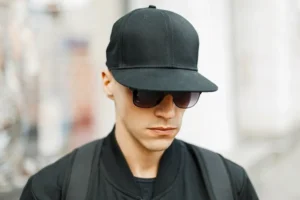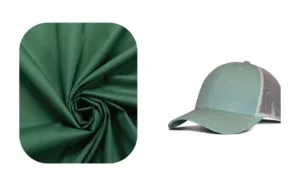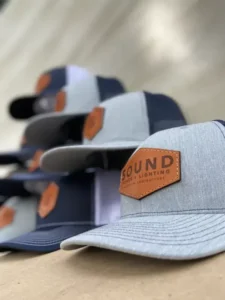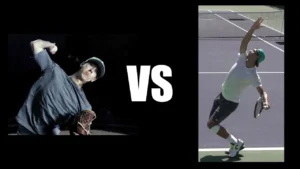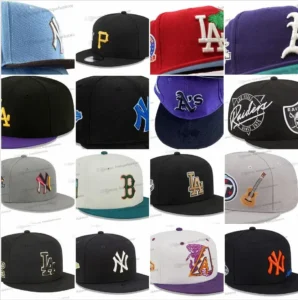When you see someone rocking a fresh baseball cap, you might not realize the intricate craftsmanship behind it. Baseball caps have become a universal symbol of style, sport, and personality, but how exactly are they made from scratch? Whether you’re a hat enthusiast, a budding designer, or a factory owner, understanding the complete process behind making a baseball cap is both fascinating and empowering.
In short, making a baseball cap from scratch involves selecting quality materials, designing precise patterns, cutting fabric panels, stitching them together, attaching a sturdy visor, adding sweatbands, and applying finishing touches — all while adhering to quality and sustainability standards. This definitive guide will take you step-by-step through everything you need to know about baseball cap production.
Imagine a cap going from raw fabric rolls to a finished product adorning someone’s head on a sunny day. Every stitch tells a story of innovation, tradition, and attention to detail. Let’s dive in to uncover what it really takes to make that perfect baseball cap.
1. What materials are needed to make a baseball cap?

To make a baseball cap, you need fabrics like cotton, polyester, or blends; stiff interlining for shape; sweatbands for comfort; and closure materials such as plastic snaps or metal buckles.
- Fabric Choices and Characteristics: Cotton is breathable and soft, ideal for casual wear. Polyester offers durability and moisture-wicking properties favored in sports caps. Blends combine benefits for comfort and performance. Sustainable options like organic cotton or recycled polyester are gaining popularity for eco-conscious brands.
- Interlining Materials: The cap’s structure depends heavily on interlining—materials like buckram or non-woven fabrics add stiffness to the front panels and visor. Choosing a lightweight but firm interlining balances comfort and shape retention.
- Sweatband Selection: Sweatbands typically use terry cloth or cotton blends to absorb moisture. Modern caps may incorporate antimicrobial or quick-dry fabrics to enhance wearer comfort during long-term use.
- Closure Mechanisms: Adjustable closures can be plastic snaps (snapbacks), fabric straps with metal buckles, Velcro, or fitted elastic bands. Each affects the cap’s style and user experience differently.
- Environmental Considerations: More manufacturers are adopting OEKO-TEX certified fabrics to ensure no harmful substances, alongside recycled materials to minimize environmental footprint.
| Material Category | Options & Characteristics |
|---|---|
| Fabric Choices | Cotton (breathable, soft), Polyester (durable, moisture-wicking), Blends (comfort + performance), Organic/recycled options for sustainability |
| Interlining | Buckram, Non-woven fabrics – provide stiffness for front panels and visor; lightweight yet firm for comfort |
| Sweatband | Terry cloth, Cotton blends; may include antimicrobial or quick-dry fabrics for better comfort |
| Closure Mechanisms | Plastic snaps (snapbacks), Fabric straps with metal buckles, Velcro, Fitted elastic bands – impact style & fit |
| Environmental | OEKO-TEX certified fabrics to ensure safety; recycled materials reduce environmental footprint |
By selecting the right mix of materials, manufacturers balance aesthetics, comfort, durability, and sustainability. If you want tailored material recommendations or bulk supply for your custom caps, Kinwin offers comprehensive sourcing and quality control services to meet your exact needs.
2. Which tools and machines are essential for baseball cap production?

Essential machines include fabric cutters, industrial sewing machines, embroidery machines, and quality inspection tools.
- Cutting Machines: Precise cutting tools, such as computerized fabric cutters or die-cut machines, ensure accuracy and minimize waste. Manual cutting can cause inconsistencies affecting fit and finish.
- Sewing Equipment: Industrial sewing machines with specialized heads handle different stitches—flatlock for seams, bar tack for reinforcements, and overlock for edge finishing. Automation in sewing improves speed and repeatability.
- Embroidery Machines: For logos or designs, multi-needle computerized embroidery machines provide consistent, high-quality decoration. They allow brands to customize caps with intricate patterns at scale.
- Heat Press and Printing Equipment: Caps may feature printed designs using heat press machines or sublimation printers, offering versatile customization options beyond embroidery.
- Quality Inspection Tools: Visual inspection, tensile testers, and color fastness machines ensure each cap meets quality and durability standards before shipment.
Modern factories invest in integrated production lines combining these machines to optimize workflow. Upgrading to such technology improves output, reduces labor costs, and enhances product consistency. Kinwin’s advanced production lines ensure all your caps meet exacting standards with competitive lead times.
| Tool / Machine | Purpose and Features |
|---|---|
| Cutting Machines | Computerized fabric cutters or die-cut machines ensure precise cuts, reduce waste; manual cutting risks errors. |
| Sewing Equipment | Industrial sewing machines with flatlock, bar tack, overlock stitches; automation boosts speed and consistency. |
| Embroidery Machines | Multi-needle computerized machines provide high-quality, scalable logo and design embroidery. |
| Heat Press & Printing | Heat press and sublimation printers enable versatile printed designs beyond embroidery. |
| Quality Inspection Tools | Visual inspections, tensile testers, color fastness machines verify quality, durability before shipment. |
3. How do you design a baseball cap pattern and choose the right size?

Designing a baseball cap pattern involves drafting individual panels, visor shapes, and sweatband templates while factoring in size grading for different head circumferences.
- Panel Configuration: Standard caps use six panels; some designs have five or more panels for unique styles. Each panel’s shape affects the overall crown curvature and fit.
- Visor Shape and Size: Visor length and curvature are key design elements, impacting sun protection and style. Flat brims are trendy in streetwear; curved visors suit traditional looks.
- Size Grading: Caps come in various sizes or adjustable fits. For fitted caps, pattern grading adjusts panel dimensions proportionally for sizes (e.g., 54 cm to 62 cm circumference). For adjustable caps, one base pattern suffices.
- CAD Software for Pattern Design: Digital pattern making improves precision and allows easy adjustments, enabling faster prototyping and customization.
- Ergonomics and Comfort: Patterns should account for comfort features like panel seams’ placement and sweatband width, avoiding pressure points.
Pattern accuracy is crucial to produce caps that feel natural and fit well. Whether designing mass-market caps or limited-edition pieces, precise pattern work sets the foundation for quality. Kinwin’s R&D team excels in pattern development tailored to your brand’s target customers.
| Design Aspect | Key Details |
|---|---|
| Panel Configuration | Standard six panels; some styles use five or more; panel shape affects crown curvature and fit |
| Visor Shape and Size | Visor length & curvature influence sun protection & style; flat brims for streetwear, curved for classic look |
| Size Grading | Fitted caps require proportional pattern grading (e.g., 54–62 cm); adjustable caps use one base pattern |
| CAD Software Usage | Digital pattern making enhances precision, speeds prototyping, and customization |
| Ergonomics and Comfort | Pattern design considers seam placement and sweatband width to maximize wearer comfort |
4. What are the step-by-step processes involved in assembling a baseball cap?

The assembly process includes fabric cutting, sewing panels, adding interlining, attaching the visor, inserting the sweatband, installing closures, and final finishing.
- Cutting: Fabric rolls are cut into panel shapes using automated cutters to reduce errors and fabric waste.
- Sewing Panels: Panels are stitched together with strong, flexible seams. The crown is formed by joining all panels, with reinforced stitching at stress points.
- Adding Interlining: Interlining is fused or sewn inside front panels and visor to maintain structure.
- Visor Attachment: The visor is assembled separately with stiff interlining, covered with fabric, then sewn onto the crown’s front.
- Sweatband Insertion: Sweatbands are sewn inside the cap base, providing comfort and moisture absorption.
- Closure Installation: Adjustable straps, snaps, or fitted elastic are attached at the rear.
- Quality Control: Every cap undergoes inspection for stitching integrity, shape accuracy, and finish quality.
- Packaging: Final products are carefully packaged to prevent deformation and damage during shipping.
Each step involves precision and quality checks to ensure the finished product meets expectations. Efficient workflow and skilled labor significantly influence output consistency. Kinwin combines experienced craftsmanship with automated processes to deliver superior caps on time.
| Step | Description |
|---|---|
| Cutting | Automated cutters shape fabric panels to minimize errors and waste |
| Sewing Panels | Panels stitched with strong seams; crown formed by joining all panels with reinforced stress points |
| Adding Interlining | Interlining fused or sewn into front panels and visor for structure |
| Visor Attachment | Visor assembled separately with stiff interlining, covered with fabric, then sewn to crown front |
| Sweatband Insertion | Sweatband sewn inside cap base for comfort and moisture absorption |
| Closure Installation | Adjustable straps, snaps, or fitted elastic attached at rear |
| Quality Control | Inspection of stitching, shape, and finish before packaging |
| Packaging | Caps carefully packaged to prevent deformation and damage during shipment |
5. Are there industry standards or certifications to ensure baseball cap quality and sustainability?

Yes, certifications like OEKO-TEX, ISO 9001, and bluesign help verify material safety, manufacturing quality, and environmental responsibility.
- OEKO-TEX Standard 100: Guarantees textiles are free from harmful substances, crucial for consumer safety, especially in apparel contacting skin.
- ISO 9001: Focuses on quality management systems ensuring consistent production processes and continuous improvement.
- bluesign System: Aims at sustainable textile production minimizing environmental impact, including chemical use and water consumption.
- Fair Labor Practices: Many brands also require suppliers to adhere to labor standards, ensuring ethical manufacturing.
- Recycling and Circular Economy: Progressive factories integrate recycling programs for fabric scraps and packaging materials, supporting eco-friendly goals.
Choosing suppliers and manufacturers certified in these areas ensures your baseball caps are safe, reliable, and environmentally sound. Kinwin’s factory complies with all relevant certifications, combining quality assurance with sustainability to support your brand’s responsible image.
| Certification / Standard | Purpose and Key Features |
|---|---|
| OEKO-TEX Standard 100 | Ensures textiles are free from harmful substances; vital for consumer safety in contact with skin |
| ISO 9001 | Focuses on quality management systems for consistent production and continuous improvement |
| bluesign System | Promotes sustainable textile production by minimizing environmental impact (chemicals, water use, etc.) |
| Fair Labor Practices | Ensures ethical manufacturing by requiring adherence to labor standards |
| Recycling & Circular Economy | Supports eco-friendly goals through fabric scrap recycling and sustainable packaging practices |
6. How can manufacturers optimize production to reduce waste and improve efficiency?

Manufacturers reduce waste by efficient fabric cutting, lean manufacturing principles, and adopting automation, all while improving cost-effectiveness.
- Smart Fabric Nesting: Using software to arrange pattern pieces tightly maximizes fabric usage, cutting down scrap.
- Lean Manufacturing: Streamlining processes by minimizing movement, reducing inventory, and focusing on continuous improvement saves time and resources.
- Automation: Introducing automated sewing and cutting machines reduces human error and increases speed.
- Offcut Recycling: Reusing fabric scraps for smaller components or other products helps close the waste loop.
- Batch Production: Grouping similar caps or sizes reduces changeover times and improves labor productivity.
- Sustainable Procurement: Sourcing eco-friendly materials from certified suppliers supports environmental goals and may lower costs in the long run.
| Optimization Strategy | Description |
|---|---|
| Smart Fabric Nesting | Software arranges pattern pieces tightly to maximize fabric use and minimize scrap |
| Lean Manufacturing | Streamlines workflows by reducing movement, inventory, and focusing on continuous process improvements |
| Automation | Automated sewing and cutting reduce errors, increase speed, and enhance consistency |
| Offcut Recycling | Fabric scraps reused for smaller parts or other products, minimizing waste |
| Batch Production | Producing similar cap styles or sizes together lowers changeover time and boosts labor productivity |
| Sustainable Procurement | Using eco-certified materials supports green goals and may reduce long-term costs |
Embracing these methods not only benefits manufacturers economically but also enhances sustainability credentials — a growing priority among consumers. For customized solutions and expert guidance on optimizing your baseball cap production, contact Kinwin to start a conversation tailored to your brand’s needs.
Baseball caps might seem simple at first glance, but their production is a careful blend of art, science, and responsible manufacturing. Whether you’re developing your own line or scaling up production, understanding every step ensures you deliver quality, comfort, and style in every stitch.
Ready to create your own custom baseball caps with premium materials and expert craftsmanship? Reach out to Kinwin today to explore OEM/ODM options, sourcing expertise, and advanced production capabilities that bring your designs to life.


